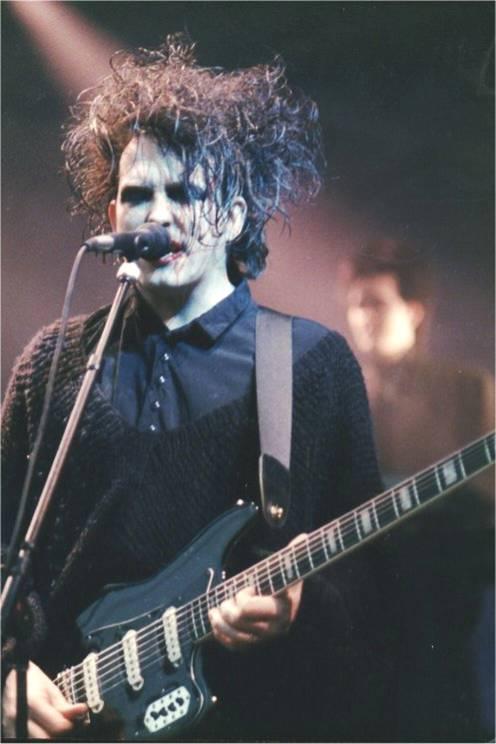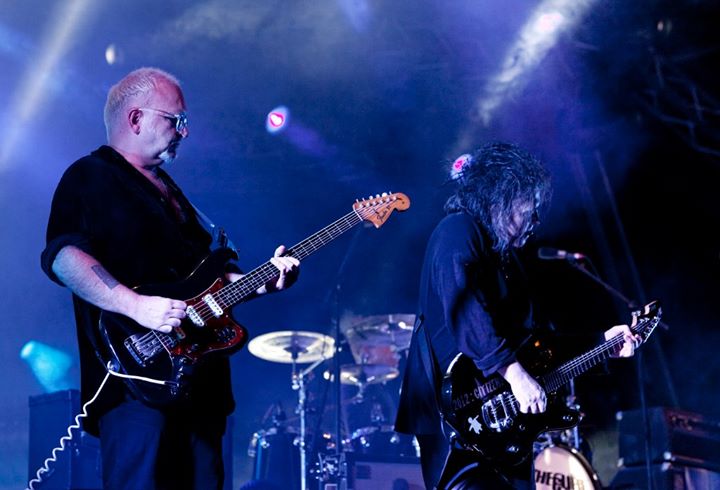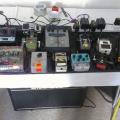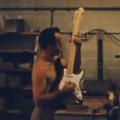 In my early days of playing guitar there were many things to understand. Understanding notes, to chords, to gear and to understand tone and instruments within a mix. The first songs I ever learned to play on guitar were Cure songs – In Your House and A Forest were those songs. I understood there was some flanger and delay effects, but getting my guitar to sound like Robert Smith seemed impossible.
In my early days of playing guitar there were many things to understand. Understanding notes, to chords, to gear and to understand tone and instruments within a mix. The first songs I ever learned to play on guitar were Cure songs – In Your House and A Forest were those songs. I understood there was some flanger and delay effects, but getting my guitar to sound like Robert Smith seemed impossible.
Later after skills improved and some basic theory started to develop, I remember trying to figure out some more Cure songs and I just couldn’t find the tone of the note. I knew the notes were right, but my pitch was too high. I would convince myself, either I’m on the wrong string (octave) or I’m just losing my mind trying to figure things out. Even getting ‘tab’ books for the Cure, the notes were right, but the tone wasn’t. Around this time, I knew the band was using Fender guitars, but that was a far as my knowledge went. I have to point out.. these were the days before the internet. I just couldn’t Google “Robert Smith Gear” and have all the answers. I would look at magazine photos, etc to gather intel.
Fender Bass VI
Years later, I started hearing about the Fender Bass VI and how Robert Smith used them on many recordings. The Fender Bass VI is a very interesting and unique instrument. At first glance.. one would think – “So, it’s a 6 string bass”. Nope. “Oh, it’s a baritone”. Nope. It’s an instrument that lies somewhere in between. Basically, the Bass VI is a guitar, one full octave lower than a standard guitar. So it’s tuned to Standard E (unlike baritones that are tuned to A or B generally), not like a typical 6 string bass with the super low strings.
These were made for guitar players to play bass notes or for bass players to have a higher register for melody or lead lines, etc. Robert, took the Fender Bass VI and made it his signature sound. He uses the Bass VI for the fantastic melody lines found on many of the classic songs, but where it really hit home for me was on the album Disintegration which was released in 1989. So many good songs with the Fender Bass VI.
Here is one of my favorite songs feature the Bass VI – Pictures of You
A few years ago, Robert Smith (and other members – past and present) has also made a deal with Schecter guitars. Robert has a line of guitars that covers all the Cure tones, including a version of the Bass VI called the Schecter UltraCure VI.
Now, I have a couple Bass VI guitars (Ultra VI and one that I’ve built). You definitely can get closer to the Cure tones, but there is tweaking involved.. and proper effects to run in line. I saw a post by Reeves Gabrels talking about the bass VI and he goes into some great details, specifically with the electronics, that would probably get you the rest of the way there. See below..
Reeves Gabrels
Today Robert Smith shares some of the Bass VI duties with Reeves Gabrels. This is what Reeves had to say about playing the Bass VI from his Facebook page:

Reeves Gabrels playing a 1962 Fender VI bass with The Cure in Barcelona, 1 June 2012; Robert Smith at right. Photo by Javier Juárez.
Fender VI (written in 2012, still true in 2016…)
On the guitar front, if there is a single instrument that makes The Cure sound like The Cure, in my opinion it’s the Fender VI (six-string bass), with Robert Smith’s distinctive playing and use of it, not as a bass—totally unnecessary when you have an incredible bass player like Simon Gallup—but as a unique guitar voice.
So, in rehearsals for this summer, when it was time to figure out what parts needed to be played in which songs, I was pleasantly surprised when Robert asked me to play the Fender on “Inbetween Days,” “Push,†and “Primary.â€
Since I do not own a Fender VI (though I did, for a time, own a Jerry Jones Danelectro-style six-string bass), Robert offered me one of his.
Thus the instrument I am playing on those three songs live is Robert Smith’s black 1962 Fender VI, which has a reddish tortoise-shell pick guard. I’m sure it has a lot of stories to tell. It has the three original Fender Jaguar-style single-coil pickups, plus three on/off pickup selector switches (one for each), as was standard for that era Fender VI.
The neck is a 30-inch scale, shorter than most other Fender bass guitars, and feels more like the neck of a Fender Stratocaster of like vintage. The strings I am using are lighter gauge than one would normally put on a regular bass. All in all, perfect for a guitar player.
The electronics of this Fender VI have been modified with an additional tone control, so it has three knobs (volume, tone, tone) instead of the standard two (volume, tone).
Two small toggle switches were also added. One is a bass cut, which removes the lowest frequency tones from all six strings. The other changes the phase of the middle pickup, resulting in a more nasal sound when used in combination with one or both of the other pickups.
My control settings on this instrument never change: Volume and tone controls all the way up (on 10); all three pickups on, in phase; with bass cut engaged (which keeps me out of the tonality occupied by Simon’s bass).
The result: I have become a Fender VI fanatic, I look forward to playing it, and it’s one of my favorite things to do at every show.
Some notes about the sound and role of the Fender VI this summer:
Primary – The Fender VI plays in the same register (pitch range) as the bass, but has a brighter, thinner tone; Robert plays a six-string electric guitar.
Inbetween Days – I play the intro melody line on the Fender VI, in an upper register, yet the thicker strings give the line additional weight; for this song Robert is playing an acoustic guitar.
Push – Counterpoint (melodic interplay) among Robert, Simon and me.
The Cure 2016 Tour
I had a chance to see the Cure on tour a couple of times now. Fantastic tour, and the Cure are on top of their game. Robert Smith is playing the Schecter UltraCure VI into Supro USA amps.. and it sounds amazing. Reeves is still playing Robert’s ’62 Fender Bass VI (not sure what amps though), and just like Robert, sweet VI tones for miles.
UPDATE
Reeves just commented on Facebook with additional information. See below…
Thanks for sharing this, Hank. To answer what amp I’m using with The Cure for the Fender VI bass — on the current tour I play the Fender VI through a HiWatt head (HiWatt DR103 Handwired 100W) with a Mesa Boogie 2×12 cabinet with Celestion speakers.
My amps are two custom 50W units by AudioKitchen Amps, each with a Mesa Boogie 2×12.
If you have a chance to catch the Cure on tour, do it. You won’t regret it. I’m still gathering my thoughts about the experience for an upcoming post. But I’m so glad I got to catch this tour. My only regret.. not catching more dates.




